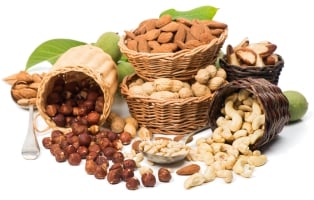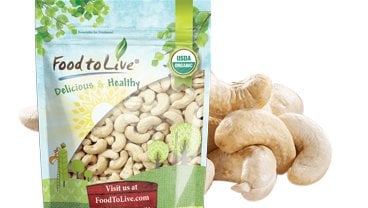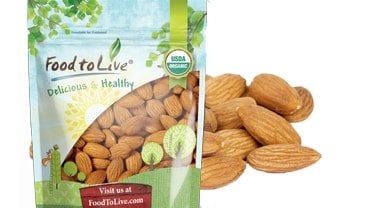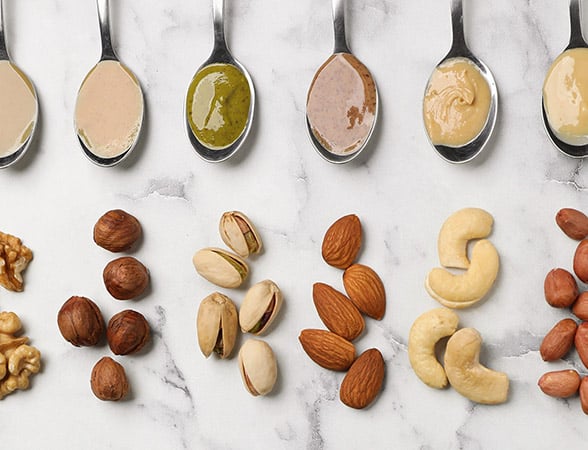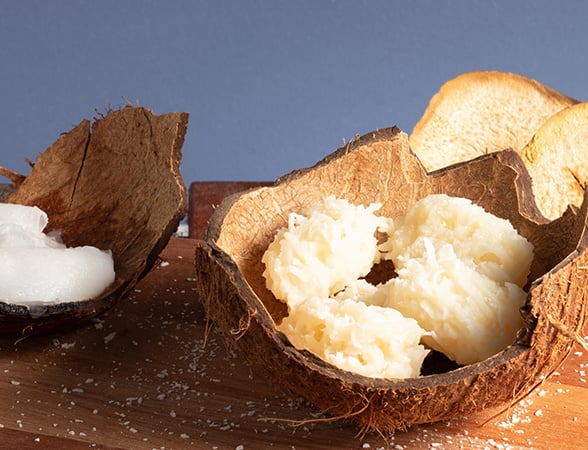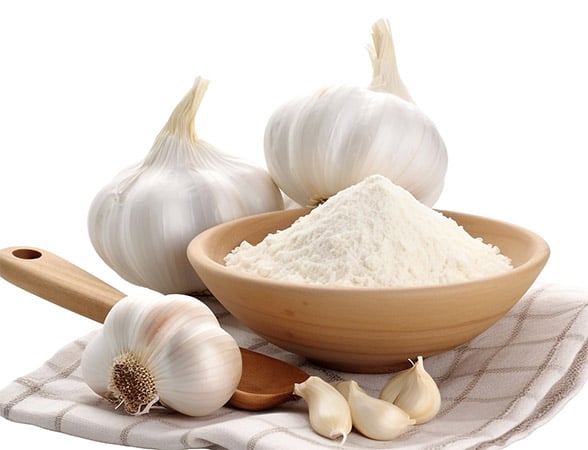December 03, 2021 · Written by Foodtolive Team
Raw nuts vs Roasted: Which is more nutritious?

Nuts are incredibly beneficial and make an excellent snack or addition to almost any dish. They are known to be rich in healthful fats, protein, and fiber. Moreover, nuts are a good source of vitamins and minerals, including Vitamin E, Folate, Potassium, and Magnesium. There are many varieties of nuts on the market today. They differ in taste, color, and price but have something in common: almost all the nuts come in raw and roasted forms. In this article, we will go over the nutritional differences between Raw vs Roasted Nuts.
Nuts are considered raw if they have not been cooked or processed in any way. It must be noted that many producers pasteurize their nuts in order to de-shell them and kill bacteria that they might carry. It is usually done using steam and for such a short time that the nuts’ flesh stays not heated. So, basically, steam is applied just to the surface which allows for nuts to stay raw and maintain their nutritional profiles. Pasteurized nuts also preserve their natural taste, structure, and chemical composition.
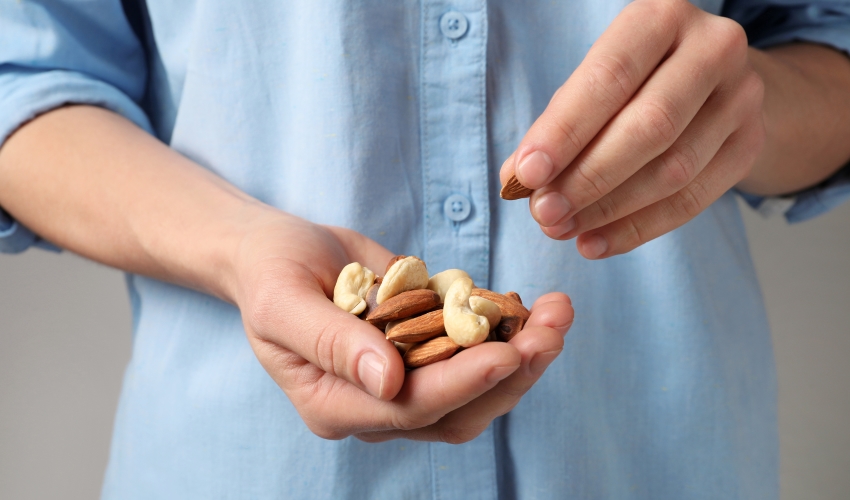
Let us dwell on raw nuts nutrition facts. Raw nuts are packed with monounsaturated and polyunsaturated fats, Omega 3 fatty acids, fiber, protein, and vitamins. The content of these substances slightly varies depending on the nut type. The table below compares the content of fats, fiber, and protein per one ounce of the most common nuts (Almonds, Cashews, Walnuts, and Brazil nuts) [1]:
|
Nuts |
Total lipid (fat) | Fiber, total dietary | Protein |
|
Almonds |
14.1 g | 3.54 g | 6.01 g |
|
Cashews |
12.4 g | 0.936 g |
5.16 g |
| Walnuts | 18.5 g | 1.9 g |
4.31 g |
| Brazil nuts | 19 g | 2.13 g |
4.05 g |
You may notice that Brazil nuts have a higher fat content while Almonds are the richest in fiber. And here is some data on fatty acids content per one ounce of the same nuts:
|
Nuts |
Fatty acids, total saturated | Fatty acids, total monounsaturated | Fatty acids, total polyunsaturated |
|
Almonds |
1.08 g | 8.96 g | 3.49 g |
|
Cashews |
2.21 g | 6.75 g |
2.22 g |
| Walnuts | 1.74 g | 2.53 g |
13.4 g |
| Brazil nuts | 4.56 g | 6.78 g |
6.92 g |
Raw Almonds carry 7.26 mg of vitamin E, Cashews – 0.255 mg, Walnuts – 0.198 mg, and Brazil nuts – 1.6 mg. [1]
Let’s take a look at the possible pros and cons of Raw Nuts. So, among the Raw Nuts benefits, we can highlight the following:
- Lower fat content and, therefore, fewer calories
- Raw nuts retain their natural nutrients
- No sodium or oil added
Possible cons:
- Not very crunchy, taste and aroma are not intense
- May be difficult to digest
- Possible bacteria contamination
The uses of Raw Nuts are versatile. They are eaten as a snack on their own, added to trail mixes, salads, baked goods, and granola. Also, no surprise Raw Nuts milk is becoming more and more popular – it is a wonderful healthful substitution for cow milk.

Well, why are nuts roasted then? The main reason is to improve their taste and texture. Sometimes, it is also a method of de-shelling or killing possible bacteria. Because Roasted nuts have lower water content, they are crunchier and more flavorful. Moreover, toasted nuts are easier to digest. The primary difference between roasting methods is whether or not oil is involved. You can buy nuts that are already toasted by the manufacturer or you can do it at home using an oven or a frying pan.
During the roasting process, nuts lose moisture and become crunchier. Also, their chemical composition changes. Raw and dry-roasted nuts have very similar amounts of fat, carbs and protein. Although, roasted nuts have slightly more fat and calories per gram, the difference is minimal.
Some studies have shown that roasting nuts does not change the overall fat content. However, the polyunsaturated fats in roasted nuts become more susceptible to oxidation, as the structure of the nut changes which affects their storage time. [2]
As for the macronutrients, their content in Roasted nuts vs Raw may differ but not significantly.
Therefore, we can point out the following Roasted nuts benefits:
- Easier to digest
- Crunchy and tasteful
- Much lower risk of bacteria contamination
Among the cons there are:
- Possible decrease of macronutrients levels
- Risk of losing healthy fats if temperatures applied are too high
- Shorter shelf-life due to potential oxidation
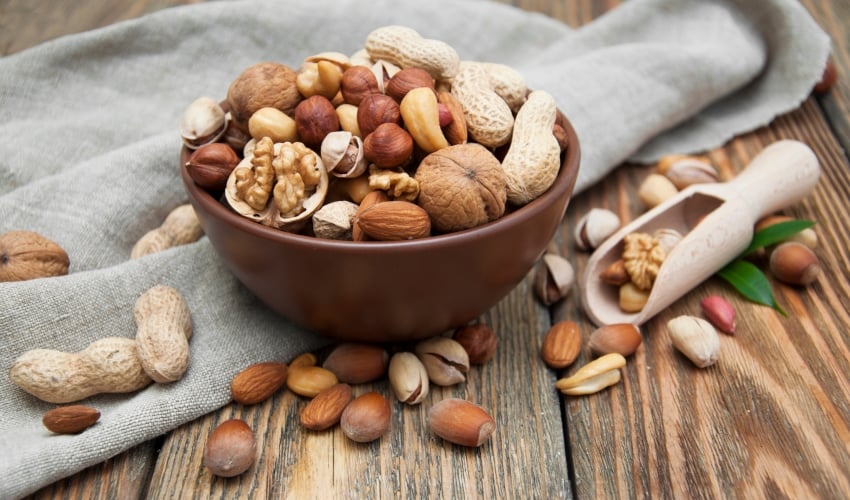
If you are wondering if there are any differences in uses, the quick answer will be no. Roasted and Raw nuts are interchangeable. Some recipes may call for roasted nuts specifically due to their enhanced taste.
Let us take a look at Raw versus Roasted nuts nutritions content on the example of Almonds and Cashews:
- As we previously found out Raw Almonds have 14.1 g of fat, 3.54 g of fiber, and 6.01 g of protein per ounce. Dry-roasted Almonds have 14.9 g of fat, 3.09 g of dietary fiber, and 5.95 g of protein.
- Raw Cashews have 12.4 g of fat, 0.936 g of fiber, and 5.16 g of protein, while dry-roasted ones have 13.2 g of fat, 0.851 g of fiber, and 4.34 g of protein. [1]
Thus, you can notice that Roasted Nuts nutrition profile changes just slightly: the fat content is a bit higher, while fiber and protein levels are vice versa lower.
To sum up, there is no significant difference in macro and micronutrients content between Raw and Roasted nuts. Therefore, if you cannot enjoy the taste of Raw nuts, you will not lose many nutrients eating them in a roasted form. Just make sure you get your roasted nuts from reliable sources.
Sources
- https://fdc.nal.usda.gov/fdc-app.html#/
- https://www.healthline.com/nutrition/raw-vs-roasted-nuts#TOC_TITLE_HDR_3

